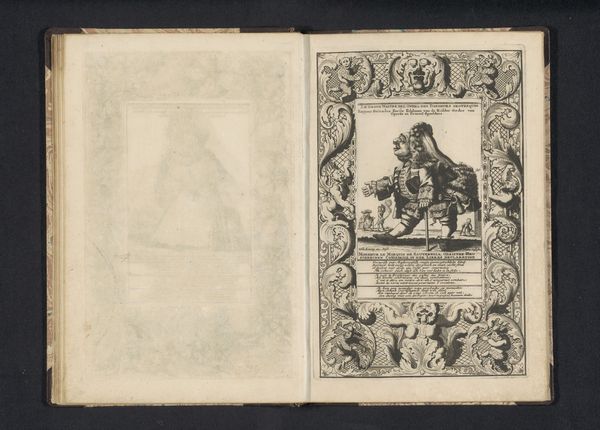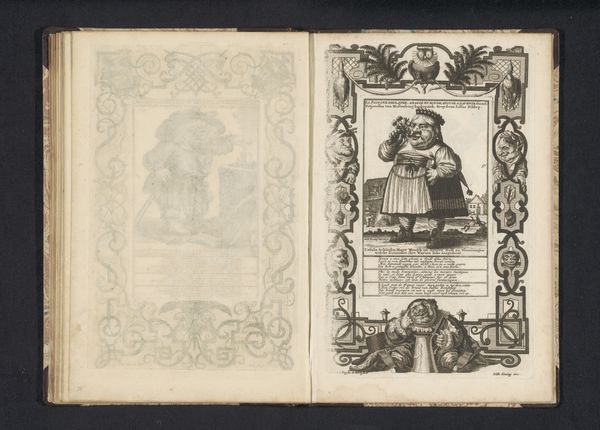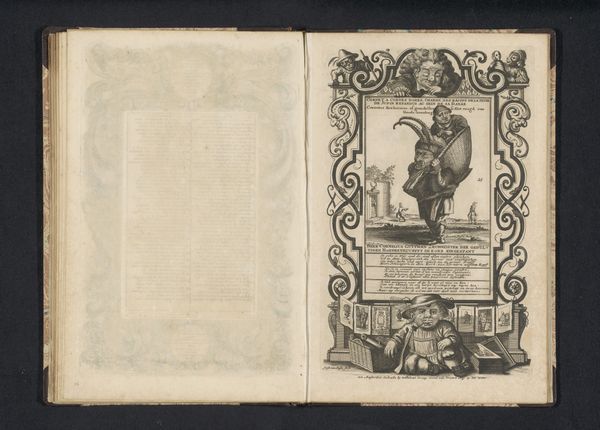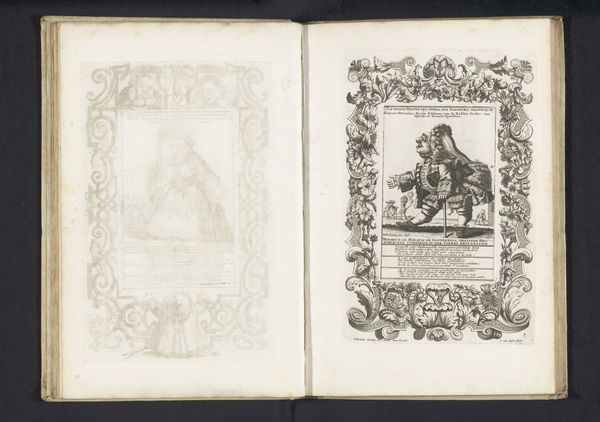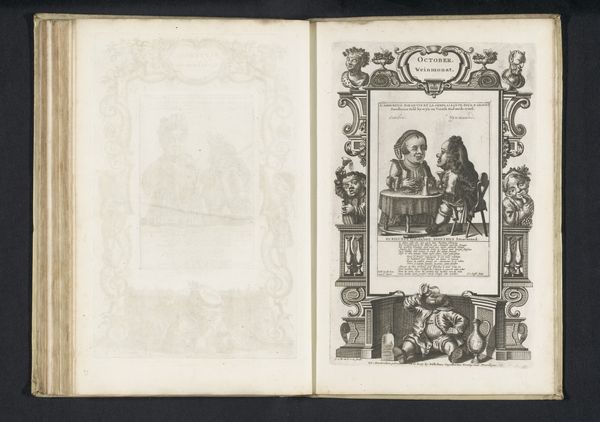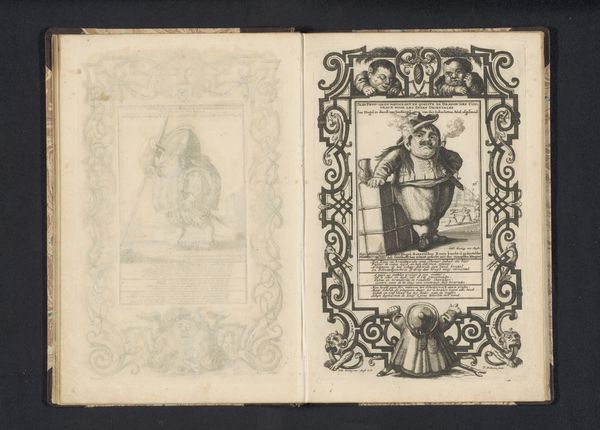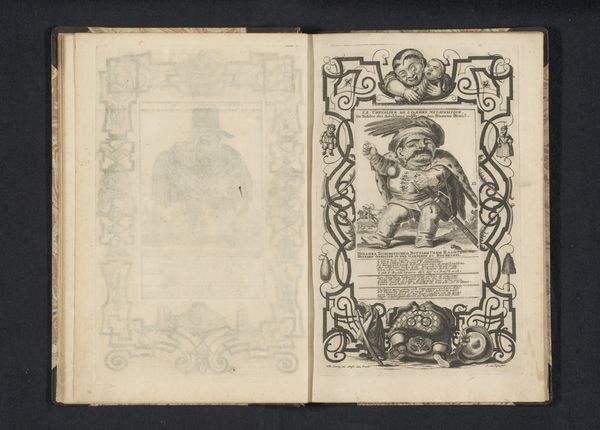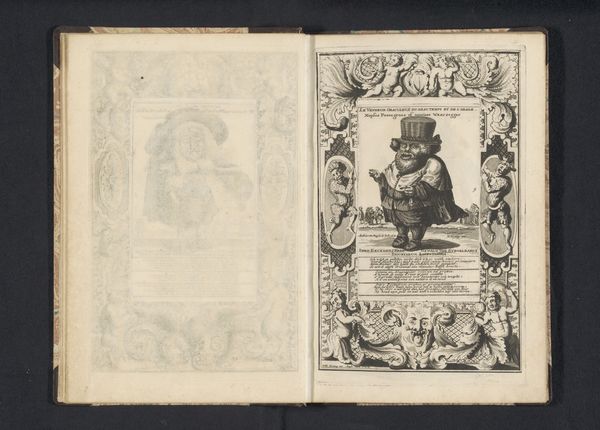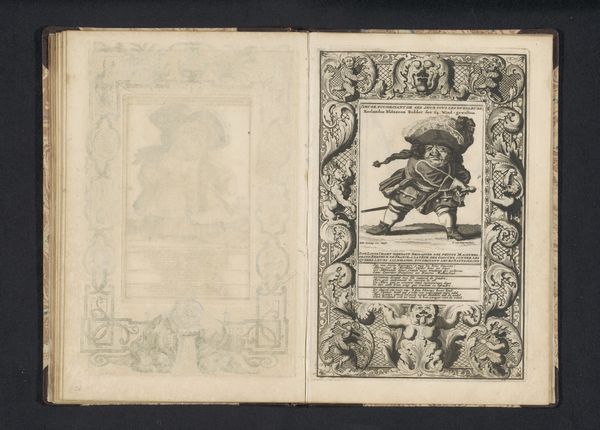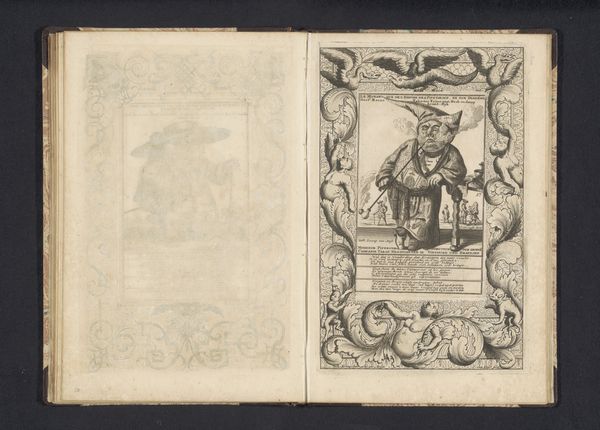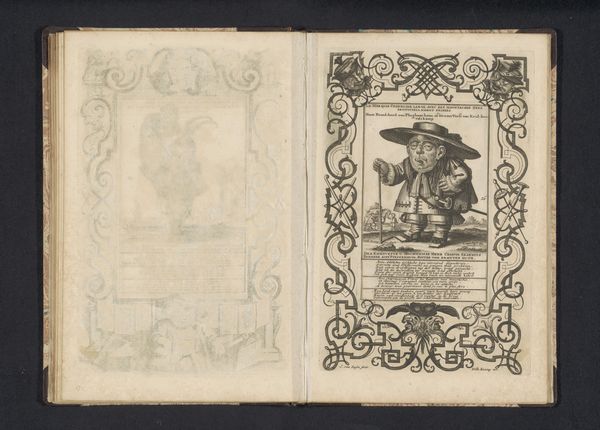
drawing, print, pen, engraving
#
portrait
#
drawing
#
aged paper
#
toned paper
#
book binding
#
homemade paper
#
paper non-digital material
#
baroque
# print
#
caricature
#
sketch book
#
paper texture
#
figuration
#
personal sketchbook
#
sketchbook drawing
#
pen
#
sketchbook art
#
engraving
Dimensions: height 160 mm, width 105 mm, height 275 mm, width 172 mm
Copyright: Rijks Museum: Open Domain
Curator: This is "De dwerg Baldus Pofpaf als een parlementslid," or "The dwarf Baldus Pofpaf as a member of parliament," a print made by Andries van Buysen around 1716, here at the Rijksmuseum. Editor: The immediate effect is satirical, wouldn’t you agree? The exaggerated features—that enormous wig, the dwarfed body—it all points to a skewering of someone important, but who? Curator: Exactly! This piece functions as political commentary. Baldus Pofpaf, likely a satirical pseudonym, is depicted as a grotesque caricature of a parliament member, probably meant to ridicule someone in the Dutch government at the time. Prints like these were vital for shaping public opinion. Editor: Looking at the linear quality of the engraving, I'm struck by the density of line and texture. The artist created a strong contrast between light and dark which directs the eye toward the figure’s outsized head and peculiar stance. It's really quite effective in conveying this sense of absurdity. Curator: The framing is very interesting too. You'll notice the border is ornate, filled with cherubs and foliage. It's a stark contrast to the biting critique within, a technique to elevate the presentation while subtly mocking the subject. Think about the power dynamics involved. The artist criticizes the political class by inverting hierarchical notions of the art's presumed elegant status. Editor: The figure's posture conveys this strange combination of importance and ridiculousness. The detail in the costume and wig, though grotesque, suggest the weight of power. This detail highlights the deliberate artistry. Curator: Indeed. By showing it so boldly in public life, satirical art such as this, created on affordable, reproducible material, empowered ordinary citizens to question and criticize authority. It reflects an emerging shift in power dynamics. Editor: It all works beautifully in tandem. From a visual perspective, the exaggeration achieves an incredible degree of distortion. From a social view, we realize the very effective means of visual dissent available at this point in history. Curator: Yes, absolutely. It speaks to how art functions as a cultural record and political tool. Editor: It also presents us with some compelling design—something so enduring it persists across centuries.
Comments
No comments
Be the first to comment and join the conversation on the ultimate creative platform.
